Shoulder pain affects millions of people worldwide, limiting daily activities and lowering overall quality of life. Healthy shoulders are key for everything from reaching overhead to carrying groceries or exercising.
Massage and mobility work are powerful tools to relieve tension, improve flexibility, and prevent further injury. By loosening tight muscles, reducing inflammation, and promoting blood flow, these techniques support both pain relief and long-term shoulder health.
Shoulder massage can provide [2] short-term pain relief, especially when combined with mobility exercises.
According to Anne Asher, CPT, a U.S. personal trainer, self-massaging the trapezius muscle—the large muscle from the neck to the shoulder—can ease stiffness and pain from poor posture or stress. She suggests gently pressing and kneading from the base of the skull outward toward the shoulder, focusing on tight spots, to reduce tension and improve posture.
1. Wall Angel Shoulder Mobility
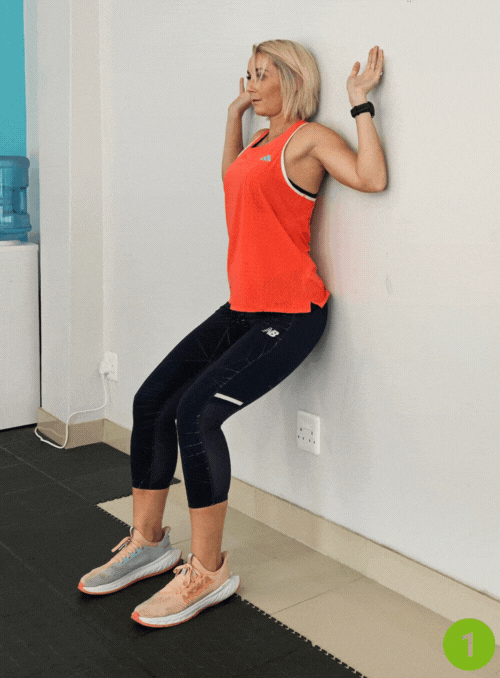
- Stand with your back flat against a wall, maintaining good alignment with your head, shoulders, hips, and feet.
- Engage your core and bend your knees slightly for stability.
- Place your arms in a “goalpost” position with your elbows bent at 90 degrees and pressed against the wall.
- Slowly slide your arms upward toward the ceiling, keeping your elbows and wrists in contact with the wall as much as possible.
- Raise your arms as high as comfortable without pain, then slowly return to the starting position.
- Perform this movement in a controlled manner for 3 sets of 8–10 repetitions.
- Take deep, steady breaths throughout, in through your nose and out through your mouth.
2. Shoulder Rolls with Massage Ball
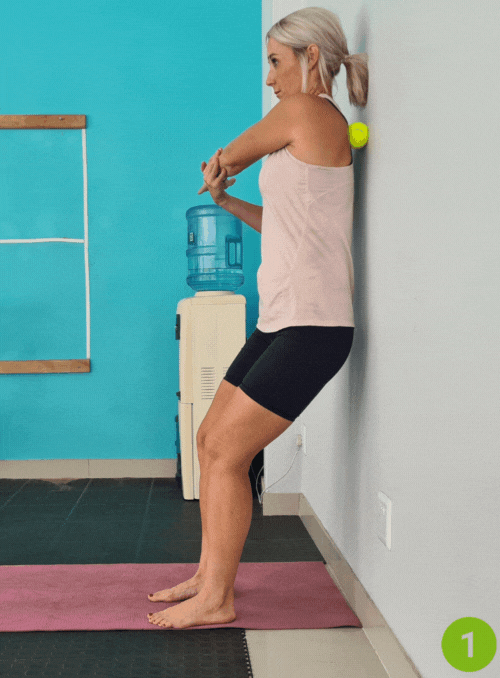
- Begin in an upright standing position with your back against a wall, maintaining good alignment with your head, shoulders, hips, and feet.
- Place a massage ball between your upper back/shoulder blade area and the wall.
- Bend your knees slightly for stability. Cross your arms in front of your chest to move your shoulder blades away from your spine.
- Engage your core and slowly roll your shoulders in a circular motion, allowing the ball to massage tight muscles around your shoulder blade.
- Roll upward, backward, downward, and forward to complete a full circle.
- Adjust your body slightly up or down to target different tight spots.
- Perform the movement slowly for 30–60 seconds in each direction.
- Breathe deeply in through your nose and out through your mouth as you roll.
- Complete 2–3 sets per side.
3. Cross-Body Shoulder Stretch
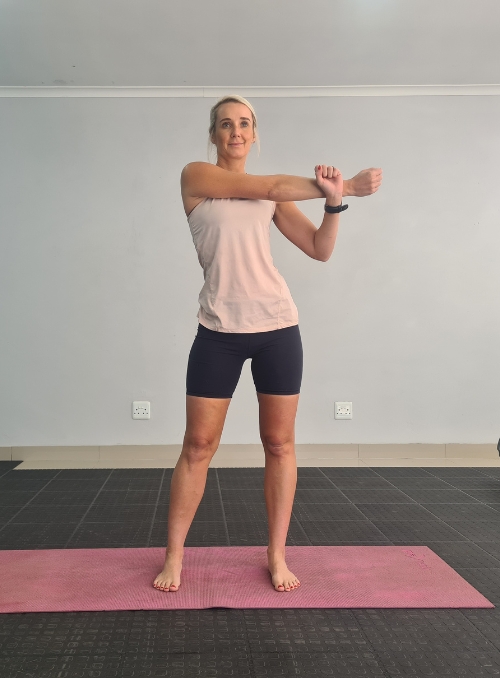
- Begin in an upright standing position with your feet shoulder-width apart, maintaining good alignment with your head, shoulders, hips, and legs. Engage your core.
- Bring one arm across your chest at shoulder height.
- Use your opposite hand to gently pull the arm closer to your body until you feel a stretch along the back of your shoulder.
- Keep your shoulders relaxed but also avoid twisting your torso.
- Hold this position for 20–30 seconds while taking slow, deep breaths in through your nose and out through your mouth.
- Relax and return to the starting position.
- Repeat the movement on the opposite side.
- Complete the stretch for 2–3 repetitions per side.
4. Seated Posterior Shoulder Stretch
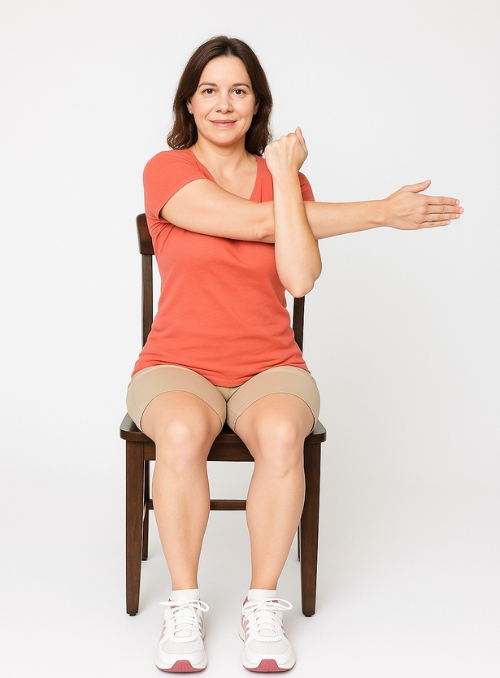
- Sit upright on a chair with your feet flat on the floor, maintaining good alignment to your head, shoulders, hips, and legs.
- Engage your core and keep your back straight against the chair.
- Bring one arm across your chest at shoulder height.
- Use your opposite hand to gently pull the arm closer to your body until you feel a stretch along the back of your shoulder.
- Keep your shoulders relaxed, avoid shrugging, and do not twist your torso.
- Hold this position for 20–30 seconds while breathing slowly and deeply in through your nose and out through your mouth.
- Relax and return to the starting position.
- Repeat the movement on the opposite side.
- Complete the stretch for 2–3 repetitions per side.
5. Foam Roller Upper Back Release
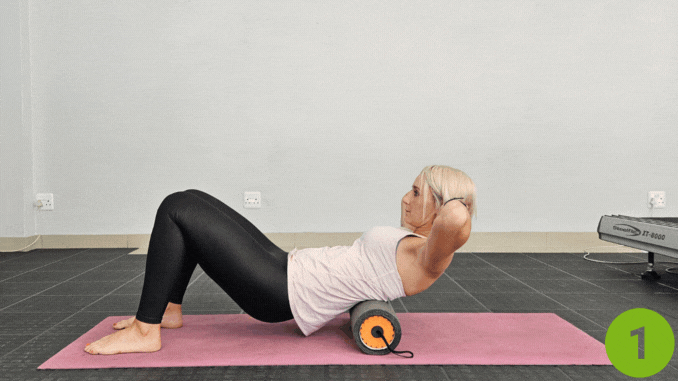
- Lie lengthwise on a foam roller so it supports your spine from head to tailbone for full stability.
- Extend your arms out to the sides and gently roll side to side.
- This relieves tension in the upper back and shoulders while improving chest mobility
6. Rotator Cuff Activation Exercises
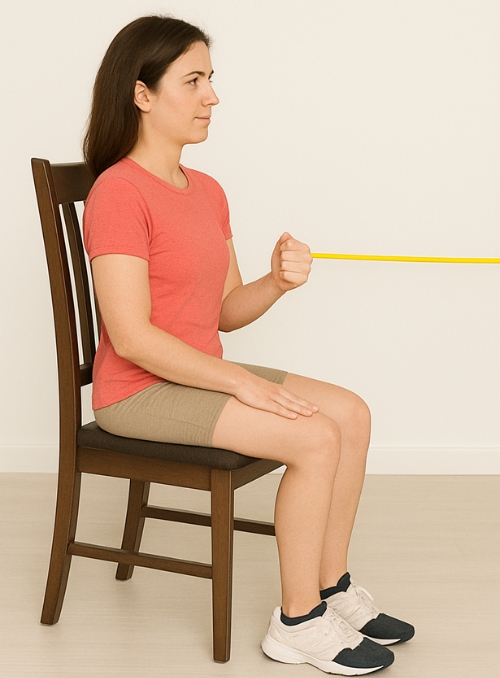
- For this shoulder massage exercises, sit upright on a sturdy chair with your feet flat on the floor, maintaining good alignment with your head, shoulders, hips and legs.
- Engage your core and keep your back against the chair.
- Hold a resistance band in one hand, with your elbow bent at 90 degrees and kept close to your body.
- Slowly rotate your forearm outward, pulling the band away from your torso while keeping your elbow tucked at your side.
- Focus on activating the small stabilizing muscles around your shoulder joint.
- Pause briefly at the end of the movement, then slowly return to the starting position with control.
- Perform this movement this movement 2-3 sets of 10-12 repetitions per side.
- Breathe steadily, inhaling through your nose as you return and exhaling through your mouth as you rotate outward.
7. Scapular Stabilization Movements (Prone T)

- Lie face down on an exercise mat with your legs extended and arms stretched out to the sides, forming a “T” position at shoulder height.
- Keep your forehead gently resting on the mat, maintaining a neutral neck position.
- Engage your core to support your spine.
- Squeeze your shoulder blades together and slightly down, lifting your arms a few inches off the ground while keeping your elbows straight.
- Hold the contraction for 2–3 seconds, then slowly lower your arms back to the mat with control.
- Avoid shrugging your shoulders or arching your back.
- Perform this exercise in a controlled manner for 2–3 sets of 12–15 repetitions.
- Breathe deeply, exhaling as you lift your arms and inhaling as you lower them.
Causes of Shoulder Pain and Stiffness

Several factors contribute to shoulder pain and limited mobility:
- Poor posture and prolonged sitting
- muscle imbalances or weakness (especially in rotator cuff and shoulder muscles)
- Overuse injuries from sports and repetitive tasks
- Stress-related muscle tension
- Age-related changes[1] in flexibility and joint health
Identifying the root cause is important, but regardless of the trigger, shoulder massage and exercises can help improve range of motion and reduce discomfort.
Why Shoulder Mobility and Massage are Crucial
Shoulder mobility and massage are crucial because the shoulder is the most mobile joint in the body, making it both essential for daily function and prone to stiffness or injury; maintaining mobility allows for pain-free movement, better posture, and improved performance in activities like lifting, reaching, or sports, while massage supports this by reducing muscle tension, improving circulation, breaking down adhesions, and relieving stress;
Together, mobility exercises and massage complement each other—mobility reinforces healthy movement patterns while massage keeps tissues loose and healthy—ultimately preventing injury, enhancing recovery, and ensuring long-term shoulder health.
Special Focus: Frozen Shoulder Care

Frozen shoulder, also called adhesive capsulitis, can cause severe stiffness and pain that limits daily function. In this condition, scar tissue forms around the shoulder joint, restricting the normal movement of the affected shoulder.
Gentle techniques like frozen shoulder massage and then stretching are essential to slowly loosen tissues. For example, you can gently stretch the affected arm upward to improve the range of motion without forcing movement. consistently following a shoulder massage and stretching routine helps reduce stiffness and prevent further loss of mobility.
Over time, carefully guided exercises can support a frozen shoulder recovery program, restore blood flow, and re-train the shoulder muscles for stability.
How Often Should You Perform Shoulder Massage & Exercises?
- Massage: About 10–15 minutes, 3–4 times per week as tolerated.
- Mobility/Stretches: Daily, especially after sitting or workouts
- Strengthening: 2–3 times per week, with focus on controlled form
Start gently and increase intensity gradually. Always listen to your body and also avoid forcing movements that cause sharp pain.
Warning Signs (“Red Flags”)
See a doctor quickly [3] if you have any of the following:
- Constant or worsening pain that doesn’t improve with rest.
- Sudden weakness or numbness in the arm.
- Unexplained weight loss, history of cancer, infection, or serious injury.
- A new lump or swelling around the shoulder.
Conclusion
Shoulder massage and targeted exercises are safe, effective ways to manage pain, strengthen shoulder muscles, and eventually improve mobility. For most people, combining daily stretches with weekly massage can protect the shoulder joint and help the affected shoulder recover from stiffness or strain.
In cases like Frozen Shoulder Syndrome, where scar tissue limits movement, a frozen shoulder massage and also stretching routine can gently stretch the tissues and restore the affected arm’s upward movement. Over time, these consistent habits help reduce frozen shoulder pain, support healing, and restore confidence in everyday activities.
Shoulder care is not just about easing discomfort—it’s about creating a long-term strategy to keep your shoulders mobile, stable, and also strong.
Struggling with that nagging shoulder pain that just won’t quit? Discover the simple moves that melt away tension and especially restore your range of motion. Check out this Frozen Shoulder Solution now!
FAQs
Which massage is best for shoulder pain?
The most effective massage for shoulder pain often depends on the cause, but deep tissue or trigger point techniques can help relieve muscle tension.
- Deep tissue massage helps loosen tight muscles and break down knots.
- Trigger point massage targets small, tender spots that can cause pain to spread.
- A gentle Swedish massage can also help relieve mild pain linked to stress.
What is the best way to massage your shoulders?
- Sit or stand in a relaxed position.
- Use your opposite hand to gently press and rub the sore spots on your shoulder.
- Make small circles with your fingers or knuckles to release tension.
- You can also use a massage ball or foam roller against the wall to roll out tight areas.
- Always breathe slowly and avoid pressing so hard that it causes sharp pain.
What are the 5 basic massage techniques?
- Effleurage (gliding): Long, smooth strokes that warm up muscles and promote circulation
- Petrissage (kneading): Squeezing and rolling the muscles to release tension.
- Friction: Small, deep circles to work on knots or tight spots.
- Tapotement (tapping): Light chopping or tapping with the side of the hand.
- Vibration: Shaking or rocking the muscles gently to relax them.


